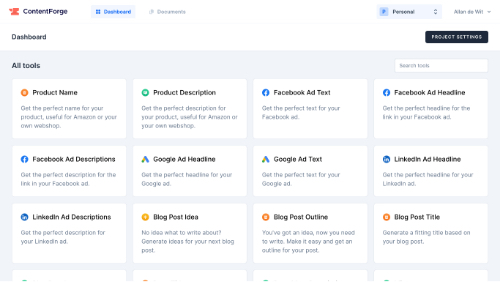
7 Tips to Create an Effective Landing Page
Jun 22, 2022 · 5 min read
A good landing page can make all the difference in whether or not people convert into paying customers. You have to make sure you include all the right elements while also keeping the page simple and easy to understand. With a little bit of planning and thought, you can create a landing page that is both effective and stylish. Here are some tips on how to create landing pages that sell.
What is a landing page?
First, let's start with the basics: what is a landing page? A landing page is any web page that someone "lands" on after clicking a link. Usually, the purpose of a landing page is to get people to convert into customers or leads - meaning they take some kind of action, like signing up for your email list or buying your product.
Creating an effective landing page requires more than just throwing up a few sentences and hoping for the best. If you want people to actually take action, there are certain elements that must be included.
A well-designed and effective landing page will:
- Be visually appealing and easy to navigate
- Contain clear and concise information about your product or service
- Include a strong call-to-action that encourages visitors to take action
- Be optimized for search engines
Landing page best practices
Creating a landing page that sells is not as difficult as it may seem. By following the tips below, you can create an effective and successful landing page that will help boost your conversions and sales.
1. Keep It Simple
The first step to creating a landing page that is effective is to keep it simple. Too much text, images, or links can be overwhelming for visitors and make them less likely to convert into customers. Stick to the essentials – include only what is necessary to explain your product or service and encourage visitors to take action.
Begin with a list of the bare minimum elements your landing page should have:
- A headline that clearly states what you’re offering
- A subtitle or tagline to elaborate on your headline
- A short description of your product or service
- An image or video to visually explain what you’re offering
- A form for visitors to fill out if they want more information
When visitors come to your landing page, they should be able to quickly and easily find the information they’re looking for. This means that you need to make sure your page is easy to scan. Use short paragraphs, bulleted lists, and plenty of white space so that visitors can easily find what they’re looking for.
Remember to keep it simple – the more streamlined and focused your page is, the better results you’ll see.
2. Write persuasive copy
An important part of creating an effective landing page is writing persuasive copy - also known as sales copy. This means using words that convince people to take action; it's all about persuasion! You'll want to use strong headlines and powerful language throughout your entire landing page in order to persuade visitors to buy your product or service.
An easy way to make your copy more persuasive is to highlight the benefits of your product or service. What can it do for your customers? How will they benefit from using it? Be sure to answer these questions in your copy, and you'll be on your way to writing persuasive sales copy that sells!
3. Use effective visuals
People are visual creatures – we are more likely than ever before to process information based on what we see rather than what we read. As such, using visuals on your landing page can be extremely effective in getting people’s attention and encouraging them to convert into customers.
Images, infographics, videos, etc., can all be used on your landing page to help explain your product or service in a way that is easy for people to understand. Next to that, it helps you break up large amounts of text so that visitors don’t get overwhelmed reading through everything at once.
4. Include a strong call-to-action
The whole point of a landing page is to encourage visitors to take action - whether that's signing up for a free trial, downloading a white paper, or making a purchase. Make sure your call-to-action (CTA) is clear, concise, and stands out from the rest of the page. An effective call-to-action will make it easy for visitors to know what they need to do next in order to take advantage of your offer.
To write a strong call-to-action, start by using active verbs that encourage people to take action, such as “download”, “sign up”, or “learn more”. Then, make sure your call-to-action is specific and clear so there is no confusion about what you want people to do. For example, if you're offering a free white paper on your landing page, make sure your call-to-action says something like “Download your free white paper”. And finally, use a contrasting color for your call-to-action so that it stands out from the rest of the page and is easy for people to find.
5. Use social proof
If you have any testimonials or customer reviews, be sure to include them on your landing page. People are more likely to convert into customers if they see that other people have had success with your product or service. Seeing happy customers can help ease any concerns a potential buyer might have about whether or not your product is worth their time and money.
The easiest way to add social proof to your landing page is to include testimonials from happy customers. If you don't have any testimonials, you can also include customer reviews or even quotes from experts in your industry. Whatever you choose, make sure it's relevant and targeted to the people who will be visiting your landing page.
6. Use short, concise forms
The longer your form is, the less likely people are going to want to fill it out. Keep your forms short and sweet, and only ask for the bare minimum amount of information that you need. The less time it takes for someone to fill out your form, the more likely they are to do it.
It's also a good idea to use inline validation on your forms so that people know immediately if they've made a mistake. This way, they can fix it right away instead of having to submit the form and then being taken to an error page.
7. Avoid common mistakes
In a previous blog post, we talked about 5 common copywriting mistakes that can kill your conversion rate. Avoiding these mistakes will go a long way in helping you create a high-converting landing page. As a copywriter, it is important to focus on your message and credibility, utilize SEO, know your audience, improve your writing skills, and have original ideas.
Use AI to create the perfect landing page
Struggling to write compelling copy for your landing page? ContentForge offers tools and a Google Docs-like document editor to help you create content for your landing pages, blogs, socials, etc., that is both relevant and engaging using AI. Try ContentForge for free and see how easy it is to use AI to create high-converting content.

We serve cookies on this site to analyze traffic, give you a better experience, and remember your preferences.
As is common practice with almost all professional websites this site uses cookies, which are tiny files that are downloaded to your computer, to improve your experience. Here we will describe what information they gather, how we use it and why we sometimes need to store these cookies. We will also share how you can prevent these cookies from being stored however this may downgrade or 'break' certain elements of the sites functionality.
You can prevent the setting of cookies by adjusting the settings on your browser (see your browser Help for how to do this). Be aware that disabling cookies will affect the functionality of this and many other websites that you visit. Disabling cookies will usually result in also disabling certain functionality and features of the this site. Therefore it is recommended that you do not disable cookies.
We use cookies when you are logged in so that we can remember this fact. This prevents you from having to log in every single time you visit a new page. These cookies are typically removed or cleared when you log out to ensure that you can only access restricted features and areas when logged in.
In some special cases we also use cookies provided by trusted third parties. The following section details which third party cookies you might encounter through this site.
- This site uses Google Analytics which is one of the most widespread and trusted analytics solution on the web for helping us to understand how you use the site and ways that we can improve your experience. These cookies may track things such as how long you spend on the site and the pages that you visit so we can continue to produce engaging content. For more information on Google Analytics cookies, see the official Google Analytics page.
- As we sell products it's important for us to understand statistics about how many of the visitors to our site actually make a purchase and as such this is the kind of data that these cookies will track. This is important to you as it means that we can accurately make business predictions that allow us to monitor our advertising and product costs to ensure the best possible price.
Hopefully that has clarified things for you and as was previously mentioned if there is something that you aren't sure whether you need or not it's usually safer to leave cookies enabled in case it does interact with one of the features you use on our site.
However if you are still looking for more information then you can contact us via [email protected].